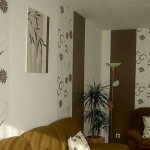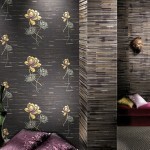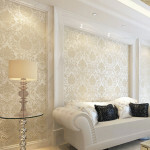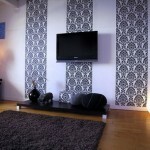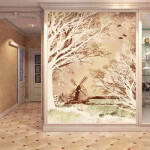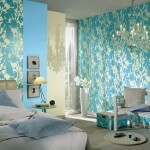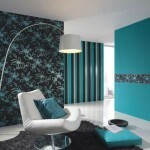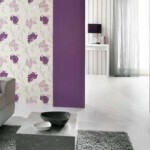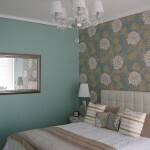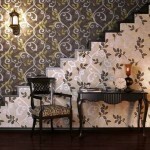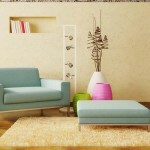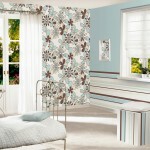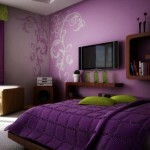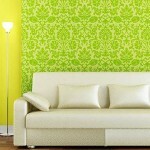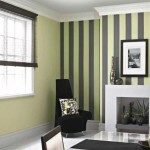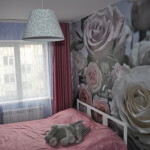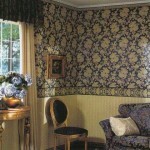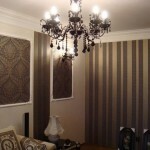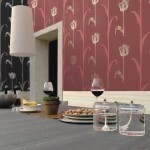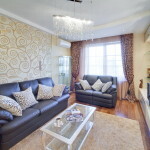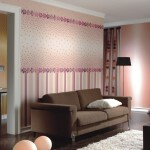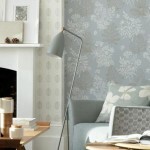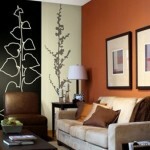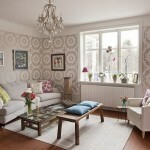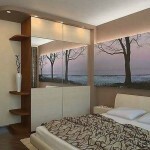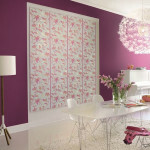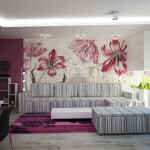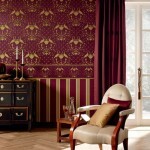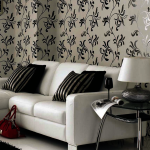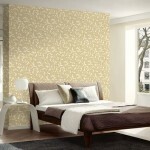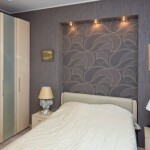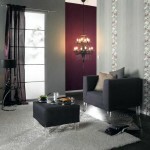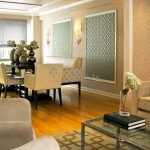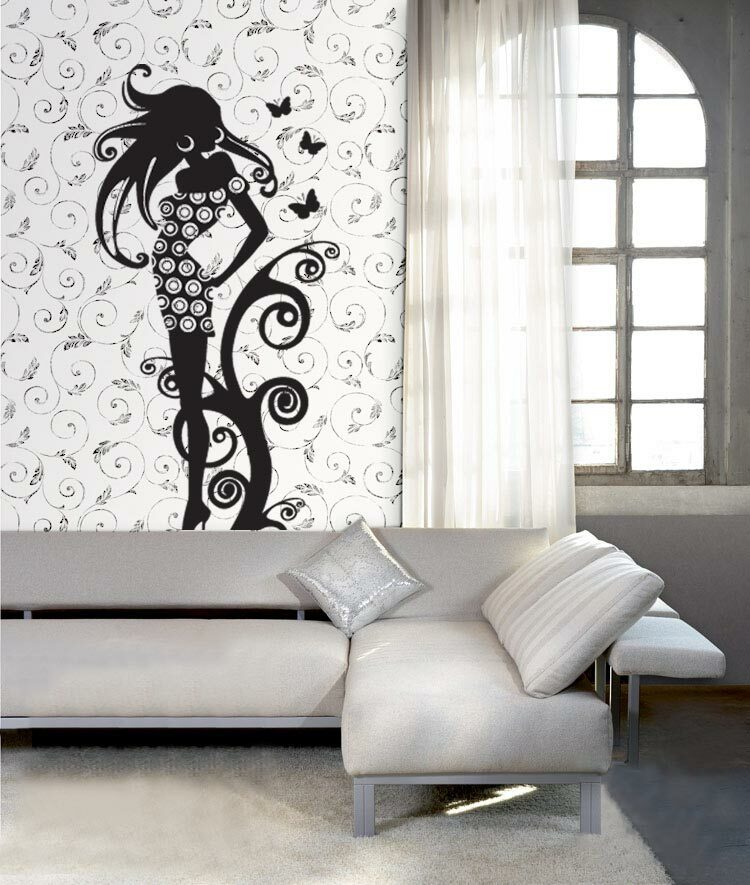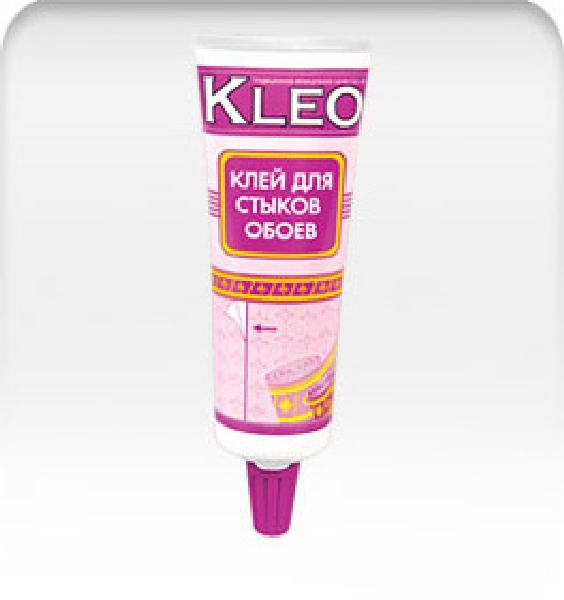Wallpaper paste (photo 48): surface preparation, choice of glue sticking to the ceiling and corners, methods, combination of materials
Table of contents
-
1 surface preparation
- 1.1 remove wallpaper
- 1.2 remove paint
- 1.3 Working with hardboard
- 1.4 Plaster
- 2 Choosing the glue
- 3 The complexity of gluing: the ceiling and corners
- 4 Methods for wallpapering: combining materials
- 5 Summing up
- 6 Photo Gallery
Wallpaper - universal finishing material used for the repair of almost any room. How to apply wallpaper to get the expected result, create for a nice relaxing atmosphere.
With wallpaper you can create unique designs, transforms the bedroom into a piece of an ancient palace, the kitchen - in a small French restaurant and private - in the luxurious Roman baths.

But this effect is rather difficult to achieve, only a true master, dejected experience can easily create the perfect room, bring your imagination. In order to do it yourself, it will take practice, patience and a lot of time.
To learn how to apply wallpaper, select materials, choose the design today in our article.
Having read a few articles about the creation of the interiors, it is impossible to become a pro in design, but you can apply this knowledge in practice, gain experience and gradually move toward the goal.
surface preparation
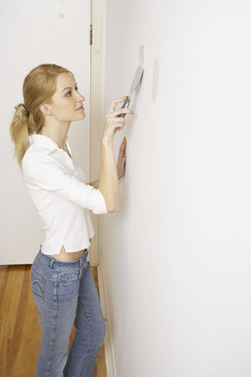
Purification of the walls with a spatula
To create a new interior in the room, we have to go through all the stages of preparation of the walls to close stickers wallpaper.
So the first thing to do - to clean the wall of the old fabric, especially if this wallpaper, old plaster or tiles.
remove wallpaper
If the surface seems quite reliable, you can check its quality, stick the test sheet. If a positive result is possible to begin pasting the room without major preparation walls.
To remove the old paper wallpaper is necessary to wet the surface with warm water and wait until the layer razmoknet. If you encounter difficulties, you can cut the canvas in some places, pour water into the cuts and scrape off the wallpaper with spatula.
If the procedure is complicated vinyl fabric wall. First, carefully remove the vinyl film with a base, and then remove the paper layer.
remove paint
If the wall is covered with paint, gluing wallpaper on the walls is possible without removing the old finish layer. All you need - determine the type of paint used, it is oil or acrylic.
The first type can be easily removed from the wall layers with a spatula, the second - is quite difficult to remove without special solvent.
Latex paint cover the composition of the solvent and the primer, it will corrode the surface and allow the next layer of primer hard to merge with the wall. After re-priming coat the wall of the diluted adhesive layer, wait begin drying and pasting.
The oil surface can be removed in two ways. Remove the layers of paint, using a spatula to clean and prime the surface or wall sanding with fine nazhdachku, and then primed.
The second option is more reliable first, but requires more time. In any case, after this training wall will be a reliable basis for any wallpaper.
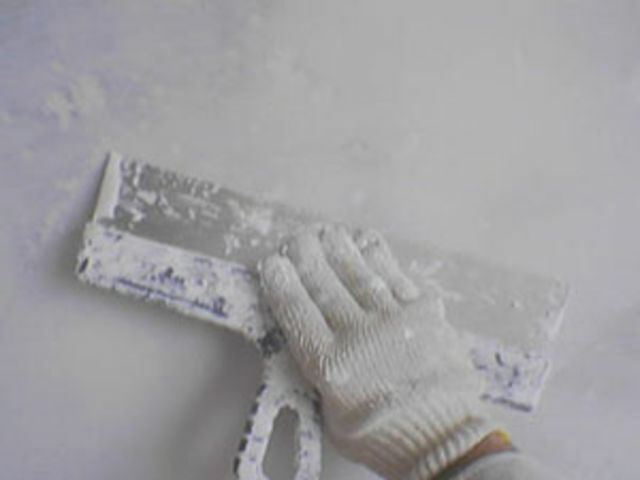
Removing paint from the wall
Working with hardboard
It's time to see how the wallpaper sticker on fiberboard. First of all, the surface sanded, primed and treated with varnish.
The disadvantages of using MDF:
- A great place for mold.
- Easily deformed under the influence of moisture.
- It requires additional processing.
- The nails used to attach the panels to the frame, often appear rust on the surface of the wallpaper.
Plaster
Plastered wall can be used as a basis for wallpaper, provided it is prior cleaning and priming. The concrete surface must be sanded and plastered, also need high-quality primer.
For gypsum carcass enough priming layer.
Choosing the glue
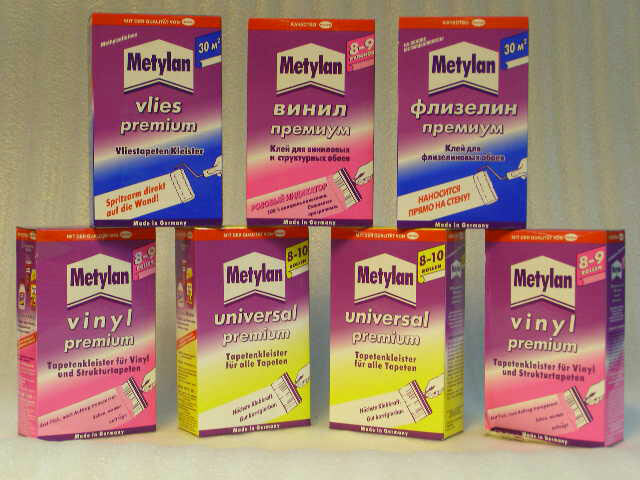
Adhesive compositions for wallpaper various types
The quality of the adhesive depends on the success of the operation, called wallpapering. Typically, a manufacturer interested in the quality of its product and making to wallpaper a special glue.
The basis of the industry is ready to put an adhesive mixtures starch, it is used to prepare the paste at home. Before you make the glue for wallpaper on their own, pay attention to the fact that such a composition is suitable only for paper webs, other types - fabric, vinyl or fiberglass require glue for heavy wallpapers based on PVA.
Among the advantages of the finished adhesive and the presence of additives refers, allowing to reduce the drying time or wallpaper protect against mold and parasites.
You pick up the necessary adhesive and ready to get to work. It's time to answer the question of how to breed glue for wallpaper? The consistency and the amount of water determined type of coating. The packaging adhesive contains detailed instructions describing the proportions in which to mix the water and the dry basis.
The resulting mass is necessary to stir until uniform consistency and leave for 5-10 minutes.
The complexity of gluing: the ceiling and corners

Fit fabric to the ceiling
Anyone who has ever had to deal with repairing and self-pasted wallpaper is aware of the pitfalls, which is what the corners and the ceiling.
recommendations:
- Be prepared to provide a convenient platform construction or goats.
- It is best to work with a partner who will hold the second part of the fabric of wallpaper and ensure evenness of the sheet stacking.
Note! With self-pasting ceiling web after spreading glue fold it "accordion", and carefully unwind as bonding free parts of the ceiling.
Pasting angles held wallpaper with a connection of several webs, the abutment can be masked by a decorative strip or area.
Inside corners are glued overlapped, but in any case not a single piece of cloth, it can lead to uneven and peeling blades.
Unfortunately, the universal instructions on wallpapering does not exist. Technology is selected depending on the material type and a pasted surface of the adhesive composition.
Methods for wallpapering: combining materials

The combination of patterns on the wallpaper
In order to make the room not only functional, but also a bright note on options for wallpapering.
- Very often, designers use a method called alternating paintings. It is based on several principles, the combination of which allows you to draw the design of any room, hiding his weaknesses and emphasizing dignity.
- The first of these methods - the "creation of horizons." The chamber divided in an exemplary 2: 1 ratio and various types of wallpaper, texture or color.
- For example, it may be non-woven and textile, vinyl and paper, glass and Mural. This method allows you to visually reduce the room, which is suitable for rooms with high ceilings.
- To finish using several traditional combinations: striped cloth - wallpapers in small patterns, plain wallpaper - fabric in a large pattern wallpaper with a pattern monogram - plain.
The vertical alignment of the various helps to correct the wrong proportions of the room.
- If the room is too narrow, use asymmetric striping. On one of the long walls paste broad band, sharply differing from the background shade, the opposite - several narrow strips of the same color, located closer to one of the corners.

Pasting fabric wallpaper with a bright pattern
- If on the long walls of the room to paste the same wide stripes accent color, the visual width to reduce it to the size of these bands. This is called symmetrical alternation.
- It is also possible to use monochrome or contrasting alternation of bands of equal width. It will transform the interior and dynamics.
- The rules wallpapering include a method of "insertion of the wallpaper." To this paste over the room initially light-colored paintings, and then decorate with bright textural inserts.
- The classic design is based on square or rectangular inserts, although other forms may be used. A variation of this design can be a "patchwork" Wallpapering.
The background color in this case is not used, there is a combination of a plurality of pieces of different textures and colors, as long as they have the same shape and share a common pattern.
- A popular method of sticking paintings - accent and color selection. For example, a niche or ledge in the room can be a major element of the interior, it is necessary only to paste over their canvases contrast with the general background. Technique is used to give additional decorative effects.
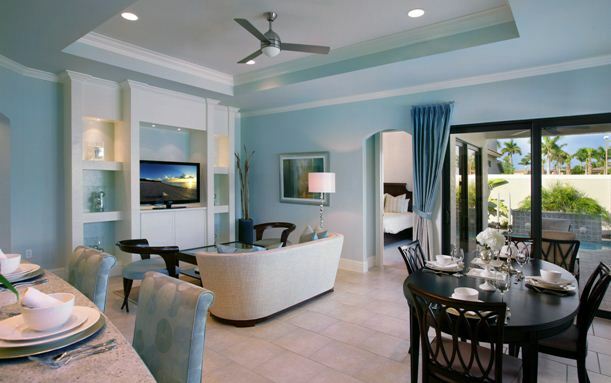
Allocation of niches in white
- Highlighting - excellent reception for visually dividing the room into functional areas or underscore the importance of the decor. You can select the color of the area behind the TV in the room, surround the bed in the bedroom pastel shades or create an accent wall in the nursery, located in her cartoons and fairy heroes.
In a child's room bright colors should be used in the games and training area.
The ideal technology wallpapering - a utopia that does not exist. When choosing a method, always pay attention to the characteristics of the premises, the type of base coat, the purpose of the room. We wish you luck in the future repair.
Summing up
We hope our article has been helpful to you. In order to more accurately understand the technological and practical issues on our website provides detailed photo and video instruction, in which you will find useful information on the question.
Photo Gallery


